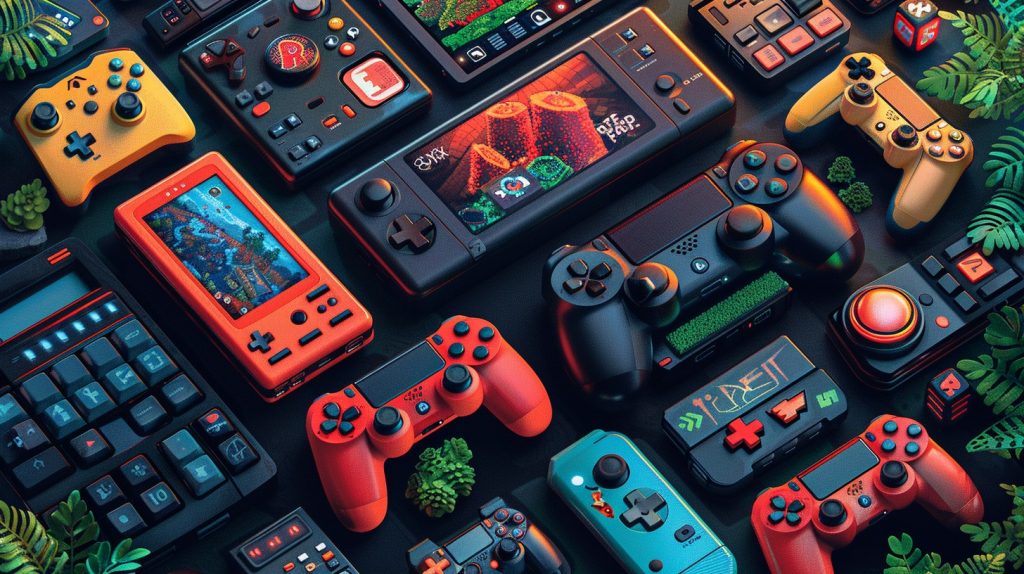
Indie games have taken the entertainment industry by storm, showing that talent and creativity can lead to success and recognition. In this article, we’ll explore what defines an indie game and the unique qualities that make them stand out.
What is an indie game?
An indie game, short for “independent game,” is a video game created by individuals or small teams without the financial backing of major publishers. These games are often made on limited budgets, featuring unique ideas and creative freedom. Known for innovation, indie games frequently explore niche genres or experimental gameplay that larger studios avoid.
Indie game development began in the early 2000s but initially struggled to gain traction. Breaking into the industry without support from big publishers like Sega or Nintendo seemed nearly impossible, as the market was dominated by these major players.
The landscape shifted with the introduction of Steam. While Steam didn’t immediately revolutionize indie gaming, it became a cornerstone for developers, offering a direct publishing platform and bypassing the need for traditional publishers. This accessibility was a turning point, allowing solo developers and small studios to reach a global audience.
Without platforms like Steam, indie games might not have achieved their current popularity. Thanks to this accessibility, countless innovative titles have come to life, proving that creativity and passion can thrive outside big-budget studios.
Indie game statistics that highlight its growing popularity
In 2019, Valve published a report highlighting indie games’ rising success. It challenged the idea that indie games lack popularity compared to blockbuster titles. Valve noted Steam’s role in helping developers achieve both visibility and financial success.
The report showed an 18% increase in games earning over $10,000 within two weeks of release between 2018 and 2019. Additionally, this milestone was achieved three times more often in 2019 compared to 2013-2014. First-week earnings for games also increased by 24% in 2019 compared to the previous year.

Indie games’ popularity remained strong in 2022. The Video Game Insights Report revealed that in the first half of 2022, 6,015 games were launched on Steam, with 5,895 being indie titles. Impressively, 4 out of the top 10 grossing games during this time were indie hits: Core Keeper, Dread Hunger, Raft, and V Rising.
These stats show the growing appeal of indie games. Gamers increasingly value what indie games offer and are willing to invest in them. As a result, the indie game market continues to thrive alongside big-budget titles.
Notable indie games
Here’s a curated list of indie games that have risen to popularity in recent years:
- Minecraft: Began as an indie game; evolved into the best-selling game of all time. Universal appeal, allowing players to express creativity through limitless possibilities.
- Journey: A minimalist game focused on emotional storytelling. Players journey toward a distant mountain, evoking deep feelings and forming connections with others.
- Cuphead: A visually stunning game inspired by 1930s cartoons. Hand-drawn animation and imaginative gameplay create a one-of-a-kind experience.
- Five Nights at Freddy’s: Viral horror game combining suspense and mystery. Became a franchise with sequels, spin-offs, and books, captivating millions.
- Letters: A Written Adventure: A text-based puzzle game about growing up, blending storytelling and gameplay. Follows the protagonist’s life from handwritten letters to emails and social media.
The pros and cons of developing an indie game
Indie game development offers freedom from traditional gaming norms and a platform for bold, innovative ideas. It attracts creators ranging from beginner coders to experienced programmers from major studios. At its core, being an indie developer means crafting games based on your unique vision.
Advantages of developing an indie game:
- Creative freedom. Indie developers have full control over the process. Without a publisher’s demands or audience expectations, you set your own pace, creative direction, and retain full ownership of your game.
- Flexible monetization. Choose the monetization model that suits your project, whether it’s premium, free-to-play, or in-app purchases, without sharing royalties with a publisher.
- A Sense of accomplishment. Seeing your vision come to life and succeed in the market is rewarding. Knowing you (and your team) built something from scratch is empowering.
- Collaboration opportunities. While you’re free from publishers during development, you can still partner with one later if your game gains traction.

Challenges of developing an indie game:
- Working alone. As an indie developer, every step—from concept to marketing—is your responsibility. Without publisher support, you’ll face challenges independently.
- Time-intensive. Developing an indie game and validating its market can take time. Before launch, you’ll need to set up a company and build trust with players.
- Limited media exposure. Gaining attention from gaming media is tough, as established publishers dominate the space. Breaking through requires extra effort.
- Financial strain. Without publisher funding, you must cover all costs. Hiring a team or outsourcing can strain your budget if not managed carefully.
Essential aspects of indie game development
Indie game development is about creating games independently, often with limited resources. Here are the key elements every indie developer should focus on:
- Creative vision: Indie games succeed through unique ideas and creativity. This allows for innovative gameplay, striking visuals, and unconventional storytelling not often seen in larger studios.
- Budget management: With smaller budgets, indie developers must spend wisely. Focus on essentials like development tools, marketing, and distribution while finding ways to cut costs.
- Team dynamics: Small teams or solo developers often take on multiple roles like programming, art, and marketing. Flexibility and multitasking are essential.
- Development tools: Choosing the right tools and engines, like Unity or Unreal Engine, is critical. These platforms offer accessibility, powerful features, and strong community support.
- Community engagement: Engage with your audience to build loyalty. Use social media, forums, and early access releases to connect with players and gather valuable feedback.
- Marketing and promotion: Promote your game through social media, influencers, game jams, and industry events. Effective marketing creates buzz and visibility.
- Distribution channels: Plan carefully where to release your game. Platforms like Steam, itch.io, and the Epic Games Store each have unique benefits and audiences.
- Player support: Provide excellent support through quick responses, in-game help, and AI-driven chatbots. Multilingual support is also key to reaching a global audience.
- Feedback and iteration: Regularly gather and use feedback to improve your game. An iterative approach ensures a polished final product.
- Legal and business considerations: Protect your intellectual property, handle contracts carefully, and secure licenses to avoid legal issues.
Indie game development is challenging but rewarding. Mastering these aspects will help turn your vision into a successful game.



